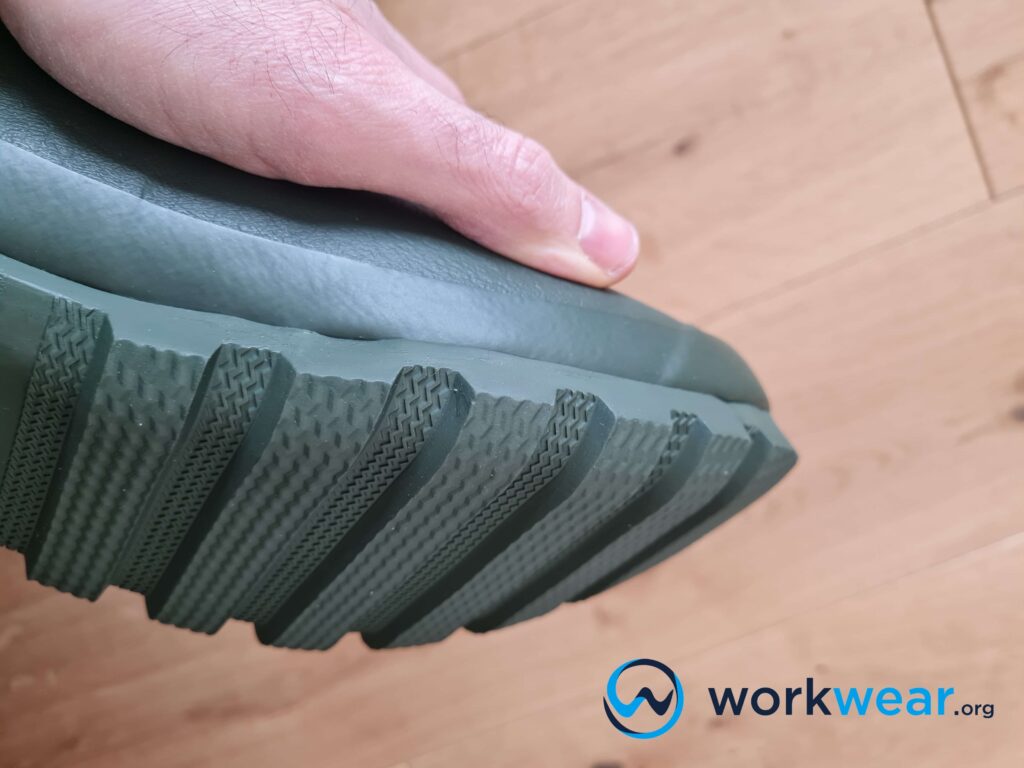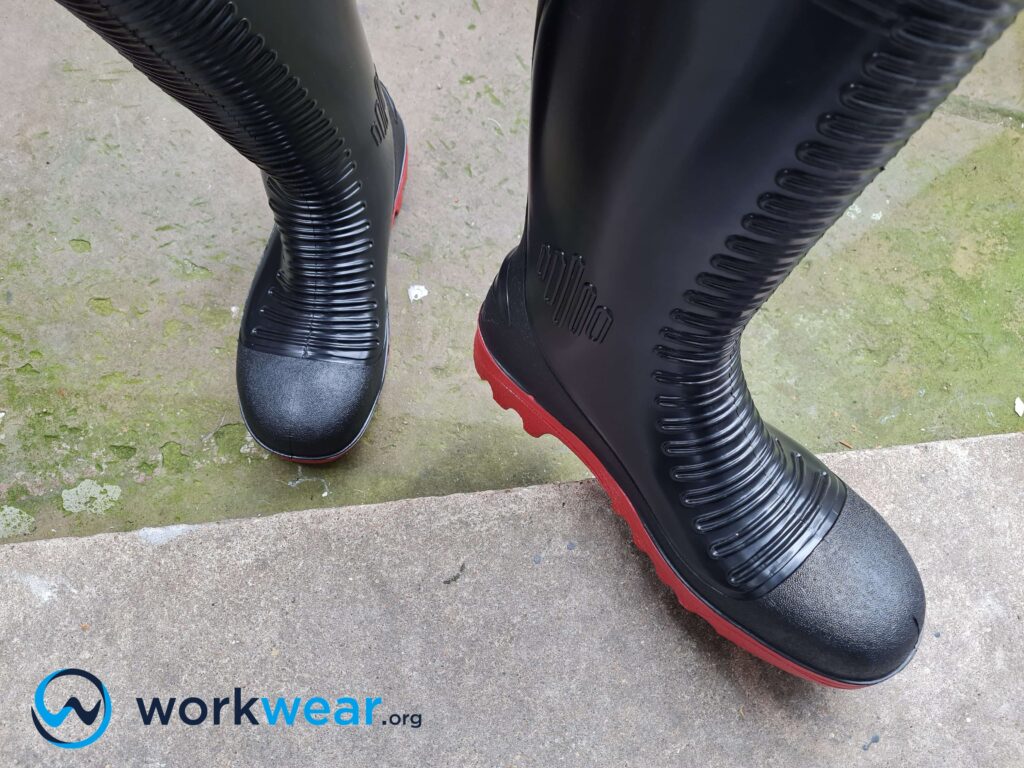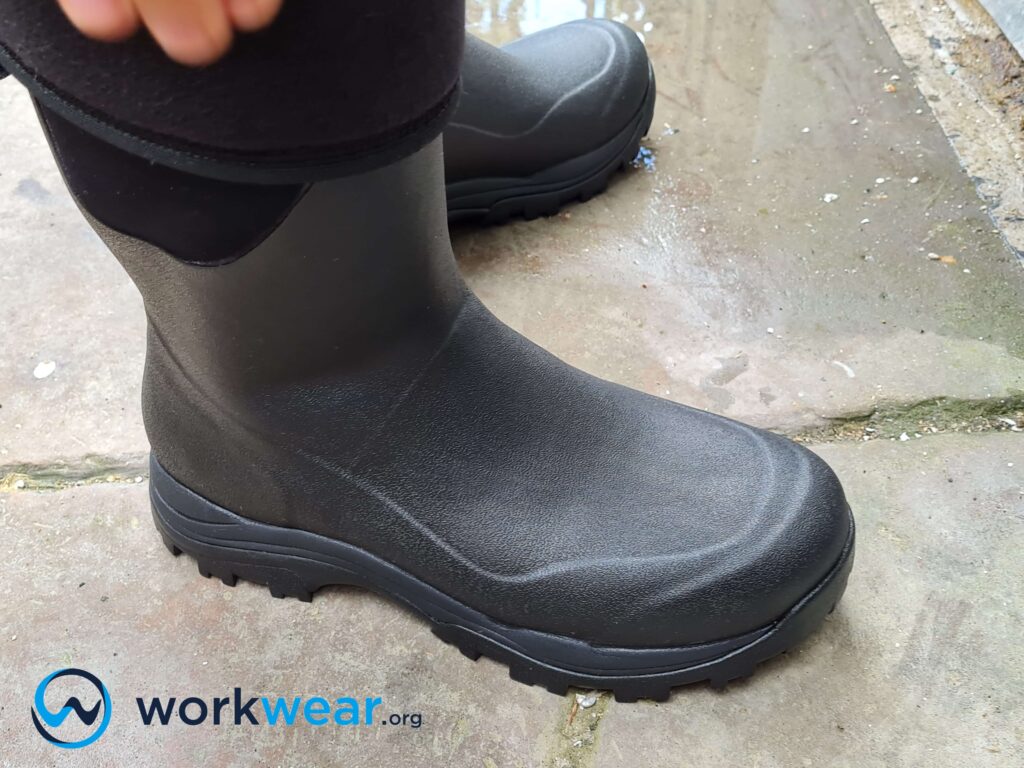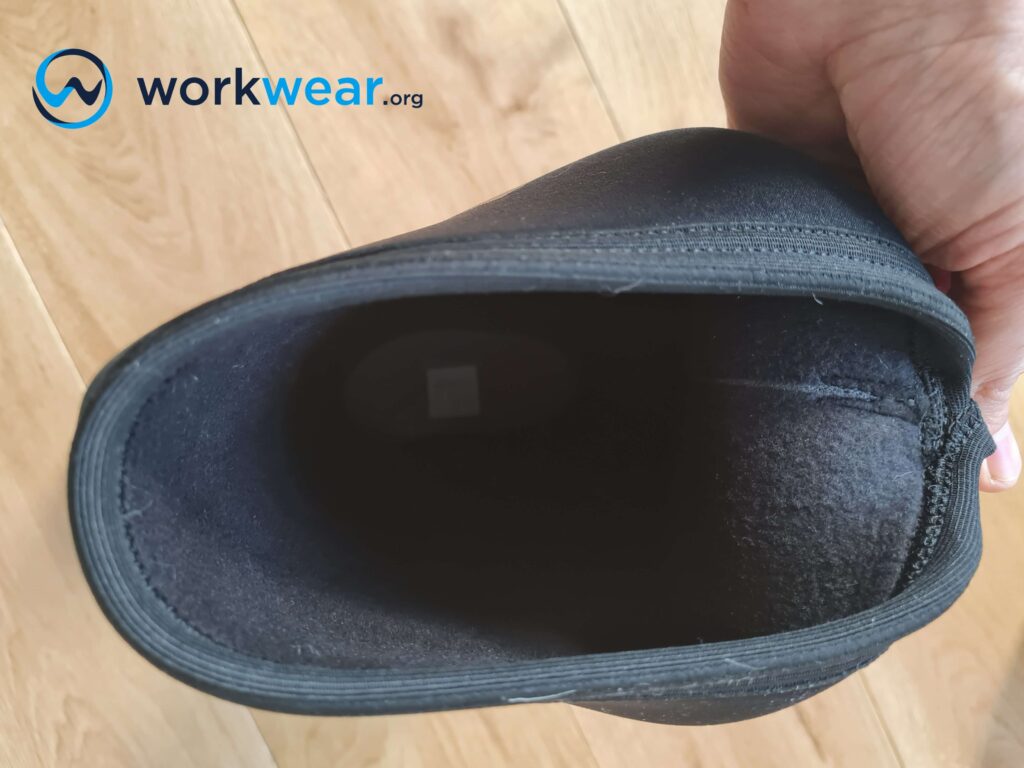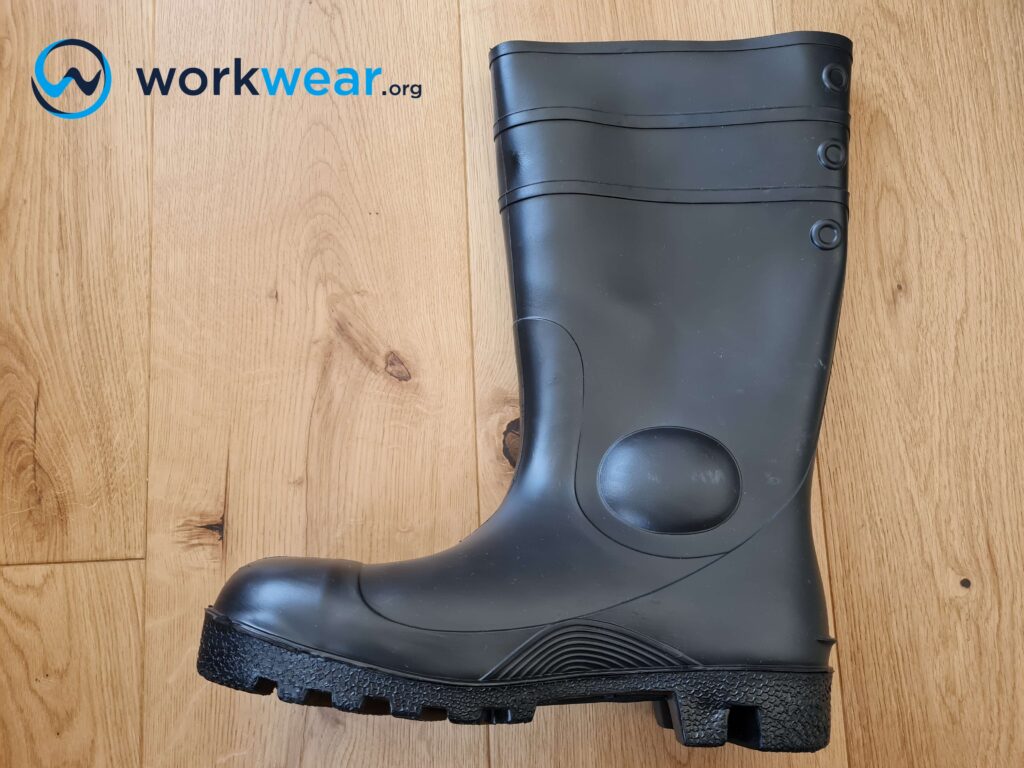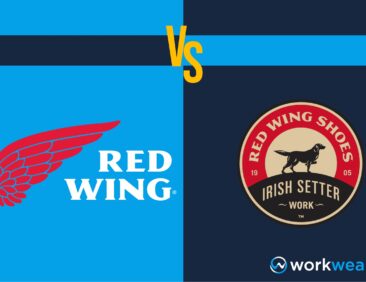Muck Boots vs. Rain Boots – The Battle of the Wet-Weather Footwear
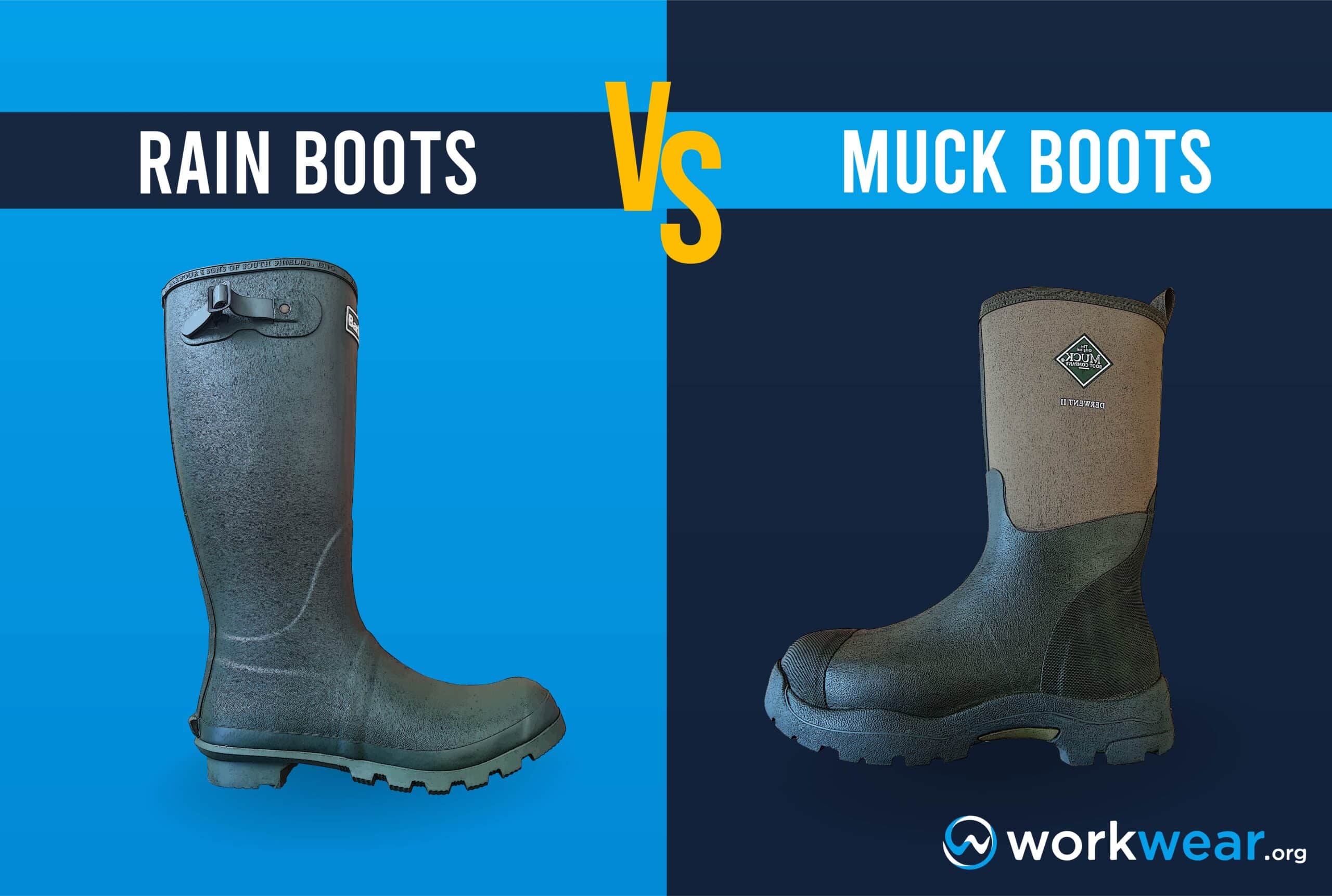
Your feet don’t have to suffer when you’re working in wet weather. With the right type of footwear, you can tackle tough tasks around wet areas while enjoying completely dry feet. Muck boots and rain boots have waterproof designs to take on the wettest settings indoors and outdoors. Do you want to determine which type suits your activities and work conditions? We’re here to help by giving you the crucial qualities that set rain boots and muck boots apart and the features that differentiate them.
For this article, “muck boots” refer to the tall, waterproof rubber boots from the Muck Boot Company with neoprene sections fitted only at the top. Other brands offering waterproof boots of comparable quality include Dunlop and Barbour. These boots aren’t made from the same material as muck boots but serve the same purpose, with similar features and functionality. It’s also worth noting that “rubber boots” (or rain boots) don’t always have 100% rubber structures. If you want to learn more about the materials most often used in rubber or rain boots, we’ll take care of that as you read more of this article.
Main Similarities
Water Resistance
Muck boots and rain boots are waterproof. Rain boots’ entire bodies are typically made with a single piece of rubber that seals out wetness. They can also come with vulcanized designs that strongly bond multiple sections to guarantee waterproofness. Rubber is also used mostly in lower sections of muck boots. The material is fully waterproof, just like the neoprene upper band, which prevents moisture from creeping in from the top and forms a snug seal over the lower leg.
Winner: Rain boots and muck boots share the same top stop because they’re both fully waterproof. They’re ideal for working in rainy or muddy outdoor conditions and indoor spaces surrounded by wetness.
Traction
Rain boots and muck boots often have heavy-duty rubber outsoles. The sturdy outsoles typically have exceptional grip for better slip resistance on wet surfaces. They usually have large treads that can dig into muddy, unstable ground or loose soil, stabilizing the steps for a safer way of navigating tricky surfaces.
Rain boots and muck boots win with high-traction outsoles that minimize the risk of slipping in slick or unstable ground conditions.
Flexibility
Muck boots and rain boots offer flexibility in variable degrees. Muck boots are significantly more flexible because they have neoprene bands on top. The material stretches to welcome the foot as it enters and returns to its original structure, creating a snug fit over the feet and lower leg. This neoprene band flexes along with every movement. It makes walking, kneeling, and going up and down stairs (or ladders) much easier. Rain boots are also flexible, especially the ones with thinner structures instead of bulky designs. Those built with rubber that’s not excessively thick are fairly pliable and allow the feet to move comfortably. However, they’re generally not as pliable as neoprene which works almost like a second skin as it conforms to the foot and ankle’s motion.
Winner: Muck boots with neoprene top sections are winners for flexibility. They follow the shape and movements of the feet and lower legs, delivering enhanced mobility and comfort on the job.
Chemical Protection
Rain boots and muck boots have similar levels of resistance to certain chemicals. The rubber components of both boots are resistant to most of the components of fertilizers, making these footwear choices suitable for jobs in farms or barnyard settings. The rubber parts also resist other chemicals, including ammonia and alcohol-based substances. On the other hand, the neoprene sections on muck boots are resistant to mild acids, but not most chemicals.
Winner: Rain boots and muck boots come out on top as they offer some level of chemical resistance. It’s worth noting that they typically don’t have the superior chemical resistance PVC boots offer.
Durability
Rain boots are not just waterproof – they’re also built to stand up to normal wear and tear. They’re typically made with rubber components that aren’t easily damaged, even with heavy use in tough settings. The main material can have resistance to abrasion, while some styles can be reinforced with abrasion-resistant components, especially on high-wear areas such as the toes and heels.
The bottom parts of muck boots are often built with sturdy rubber. This material is as resistant as rubber boots, protecting the feet against wetness, abrasion, and mild impact. However, the neoprene top band doesn’t share the same strength level as rubber. It doesn’t offer the same toughness and protection as rubber boots, especially in challenging conditions.
Winner: Rain boots are durable. Their hard-wearing materials are designed to protect the feet against wetness, abrasion, and mild impact for safer experiences on the job site.
Main Differences
Adjustability
Waterproof boots that can be adjusted offer even better performance at work. The neoprene sections of muck boots can be folded or rolled down as needed. This adjustability is especially helpful in hot conditions when shortening the boots’ length can cool down tired feet. The neoprene bands can just as easily be unfolded to bring the boots back to their original height, which offers better coverage and overall protection. The neoprene also adjusts to the contours of the feet, ankles, and lower legs. It creates a nearly customized fit for remarkable comfort and a wider range of motion.
On the other hand, rain boots typically can’t be adjusted. The rubber material retains its robust structure, protecting the feet against the elements by providing a solid barrier against liquids. However, it can’t be rolled down or folded like neoprene, so the boots’ height can’t be adjusted when required.
Winner: Muck boots get the top spot for adjustability. The neoprene sections on top are flexible enough to be folded or rolled as needed, so the boots’ height can be adjusted for better breathability and overall comfort.
Insulation
Muck boots with neoprene sections keep the feet warm in cold conditions. The boots manufactured by Muck Boots use neoprene that’s designed to protect the feet in sub-zero temperatures for up to one hour. The neoprene band retains heat for better comfort in cold environments. It also fits snugly around the feet and lower legs, preventing cold air from entering. The rubber and neoprene sections are also waterproof for additional protection in cold, wet conditions.
Ordinary rubber has good insulation properties but not at the level of neoprene. Thick rain boots can stop cold air from getting in quickly but can’t keep the feet warm in low-temperature surroundings.
Winner: Muck boots with neoprene components excel in insulation. They preserve the warmth to keep the feet comfortable and protected from freezing in exceptionally cold environments.
Weight
All-rubber rain boots are ready for the toughest jobs but are also quite heavy. Rain boots with heavy-duty designs tend to be bulky, so they can become unbearable when used for a long time. The hefty structures can weigh down the feet with an uncomfortable feeling and make walking or staying upright much harder to do over extended periods.
Meanwhile, muck boots made with rubber and other materials – such as neoprene – are generally more lightweight than all-rubber boots. Since they weigh less, muck boots are more comfortable for all-day walking or standing on the job. The minimized weight also supports the feet for a good range of motion.
Winner: Muck boots win with more lightweight designs. They often combine rubber with other components, weighing considerably less than boots built entirely from rubber.
Comparison table
| Muck Boots | Rain Boots | |
| Water Resistance | Waterproof | Waterproof |
| Traction | Excellent | Excellent |
| Flexibility | Very flexible | Flexible |
| Chemical Protection | Strong | Strong |
| Durability | Good | Outstanding |
| Adjustability | Adjustable (neoprene can be rolled or folded) | Not adjustable |
| Insulation | Good | Minimal |
| Weight | Lightweight | Heavy |
Who’s the Overall Winner?
Muck boots stand out as the overall winner because they excel in flexibility, adjustability, insulation, and weight – factors that directly impact foot comfort. Meanwhile, the strength of rain boots lies in the material’s durability, making them ideal for exceptionally tough jobs.
Recap
Pick rain boots for:
- Jobs in tough conditions
- Wet settings
- Protection against some harsh substances
Choose muck boots if you:
- Want adjustable waterproof boots
- Need to be on your feet all day
- Work in cold environments
Personal Testing Experience
Here’s what we observed while using rubber and muck boots in different wet environments. The Muck Boot Chore Classic Work Boot’s bottom part was made with rubber offering superior waterproofness. It had triple-reinforced toe sections that kept the toes safe against mild impact and abrasion. The neoprene liner on top was also fully waterproof and flexible, molding to the foot and lower leg for a comfortably snug fit. It also retained ample heat and maintained comfy warmth in cold conditions. A breathable lining dissipated sweat and heat, keeping the interior dry and fresh for longer. However, the boot felt uncomfortably heavy before long. Meanwhile, the Barbour Bede Wellington Boot was built with vulcanized rubber that completely blocked water and other liquids. The tartan lining gave this boot’s silhouette a classic touch. A tapered ankle design improved walking stability and protected the ankle from accidentally twisting. Even with its extended height, this rain boot stayed comfortable, mainly because of its flexibility that enabled comfortable walking. We noted that the sole wasn’t very thick or robust and showed signs of wear and tear early on.
Conclusion
Muck boots and rain boots are great for wet conditions, but their strengths go beyond waterproofing. Muck boots stand out with flexible, lightweight, and adjustable designs, typically with neoprene sections for insulation to keep the feet comfortable and warm in cold settings. Meanwhile, all-rubber rain boots have sturdy designs providing long-lasting protection against the elements, abrasion, and mild impact.
FAQ's
- Are there Muck Boot boots made entirely of neoprene?
- No. Neoprene is used only on the top part of these waterproof boots, which have rubber booties and outsole sections.
- Can all rain boots be used in cold work areas?
- It depends on how cold the workplace is. Non-insulated rubber boots can protect the feet in mildly cold settings. However, extra insulation (not just rubber) is needed to keep the feet warm in severely cold environments.
- Are muck boots good for indoor use?
- Muck boots are best suited for wet, outdoor settings but can also be used in indoor work areas with low temperatures and wet elements.
- Is it okay to use rain boots in hazardous work conditions?
- Yes, if they have the crucial safety features. For example, rain boots with safety toe caps suit job sites with compression and impact threats. On the other hand, rubber boots with electrical hazard-safe designs are great for work areas that may have exposure to open circuits.

